Kingdom of Bhutan
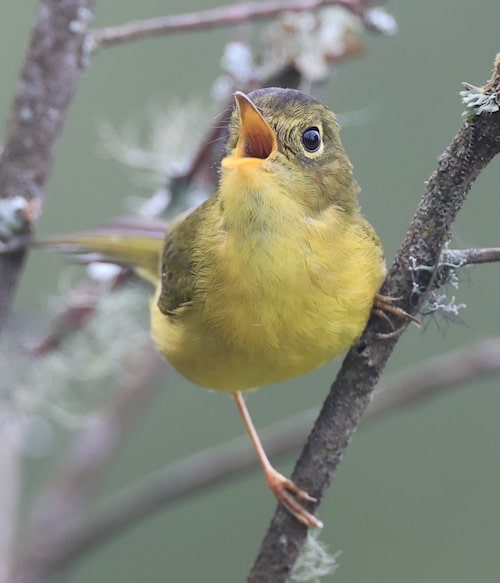
Bhutan is a landlocked country in South Asia situated in the Eastern Himalayas between China in the north and the Indian states of Sikkim, West Bengal, Assam to the west and south, and the Indian state of Arunachal Pradesh to the east. With a population of around 790,000 people and a territory of just over 38,000 km2 (c.15,000 square miles), Bhutan ranks 133rd in land area and 160th in population. Bhutan is a constitutional monarchy with a king (Druk Gyalpo) as the head of state and a prime minister as the head of government. The Je Khenpo is the head of the state religion, Vajrayana Buddhism. The capital and largest city is Thimphu, holding close to 15% of the population.
The subalpine Himalayan mountains in the north rise from the country’s lush subtropical plains in the south. In the Bhutanese Himalayas, there are peaks higher than 23,000 feet above sea level. Gangkhar Puensum is Bhutan’s highest peak and is the highest unclimbed mountain in the world. The land consists mostly of steep and high mountains crisscrossed by a network of swift rivers that form deep valleys before draining into the Indian plains. In fact, 98.8% of Bhutan is covered by mountains, which makes it the most mountainous country in the world.
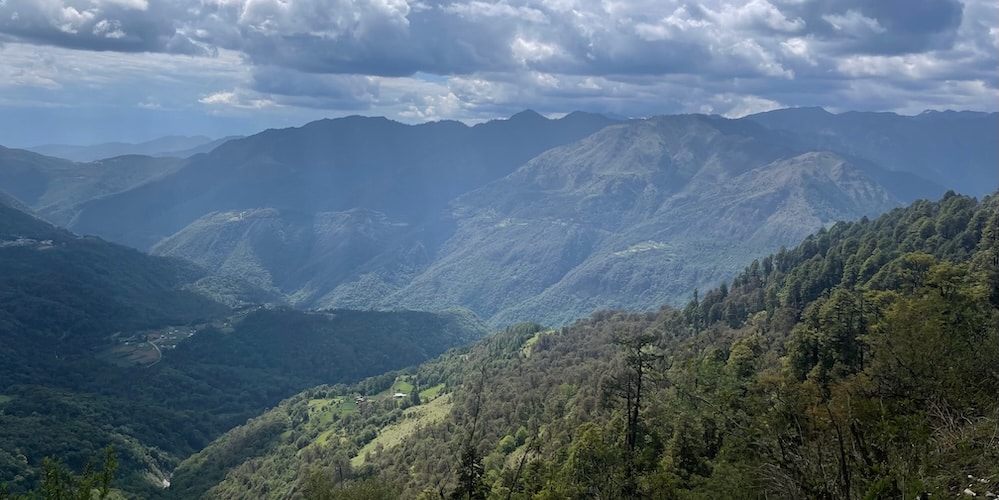
Mongar District – ©Bird-Photo-Tours ASIA
This great geographical diversity combined with equally diverse climate conditions contributes to Bhutan’s outstanding range of biodiversity and ecosystems. Bhutan’s northern region consists of an arc of Eastern Himalayan alpine shrub and meadows reaching up to glaciated mountain peaks with an extremely cold climate at the highest elevations. Watered by snow-fed rivers, alpine valleys in this region provide pasture for livestock, tended by a sparse population of migratory shepherds. The Black Mountains in Bhutan’s central region form a watershed between two major river systems: the Mo Chhu and the Drangme Chhu. The forests of the central Bhutan mountains consist of Eastern Himalayan subalpine conifer forests in higher elevations and Eastern Himalayan broadleaf forests in lower elevations.
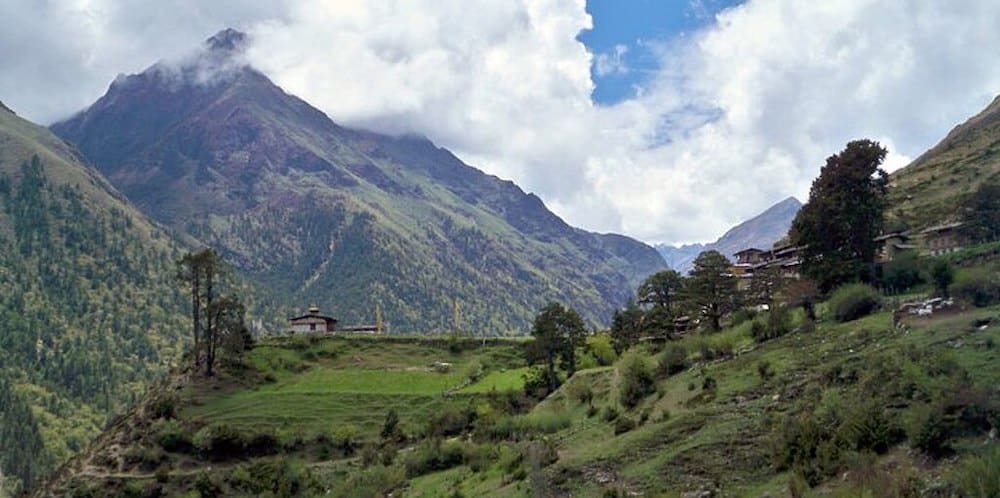
Sub-alpine Himalayan Landscape – ©Jan, CC BY-SA 2.0 via Wikimedia Commons
The Woodlands of the central region provide most of Bhutan’s forest production. The Torsa, Raidak, Sankosh, and Manas are Bhutan’s main rivers, flowing through this region. Most of the population lives in the central highlands. In the south, the Shiwalik Hills are covered with dense Himalayan subtropical broadleaf forests, alluvial lowland river valleys, and mountains up to around 1,500 m (4,900 ft) above sea level. The foothills descend into the subtropical Duars Plain, which is the eponymous gateway to strategic mountain passes also known as dwars or dooars; literally, ‘doors’. The northern Duars, which abut the Himalayan foothills, have rugged, sloping terrain and dry, porous soil with dense vegetation and abundant wildlife. The southern Duars have moderately fertile soil, heavy savanna grass, dense, mixed jungle, and freshwater springs. Mountain rivers, fed by melting snow or monsoon rains, empty into the Brahmaputra River in India The country has a forest cover of c. 65%.
Bhutan experiences five distinct seasons: summer, monsoon, autumn, winter and spring. Western Bhutan has the heavier monsoon rains; southern Bhutan has hot humid summers and cool winters; central and eastern Bhutan are temperate and drier than the west with warm summers and cool winters.
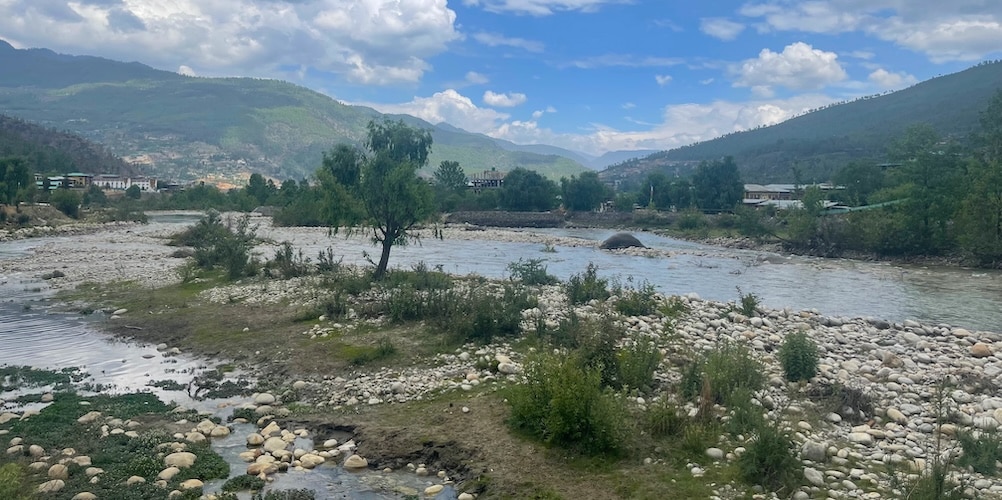
Paro District – ©Bird-Photo-Tours ASIA
The wildlife of Bhutan is notable for its diversity, including the Himalayan Takin, Asian Elephant and Golden Langur and a rich primate life. The Bengal Tiger, Clouded Leopard, Hispid Hare and Sloth Bear live in the tropical lowland and hardwood forests in the south. In the temperate zone, Grey Langur, Tiger, Goral and Serow are found in mixed conifer, broadleaf and pine forests. Fruit-bearing trees and bamboo provide habitat for the Himalayan Black Bear, Red Panda, Squirrel, Sambar, Wild Pig and Barking Deer. The alpine habitats of the great Himalayan range in the north are home to the Snow Leopard, Blue Sheep, Himalayan Marmot, Tibetan Wolf, Antelope, Himalayan Musk Deer and the Bhutan Takin, Bhutan’s national animal. The endangered wild Water Buffalo occurs in southern Bhutan, although in small numbers.
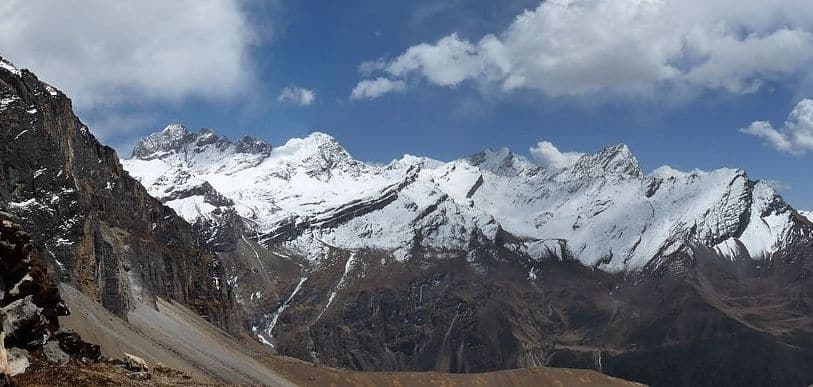
Jigme Dorji National Park – ©Andrewgrandison, CC BY-SA 3.0 via Wikimedia Commons
The country has more than 40% of its territory designated as national parks, reserves and other protected areas, and most recently a further nine per cent of land area as biodiversity corridors linking the protected areas. Therefore, half the nation has some form of protection for nature. More than 770 species of bird have been recorded in Bhutan, including the globally endangered White-winged Duck.
Birding Bhutan
The bird habitats of Bhutan can be roughly divided into forest, scrub, wetlands, alpine habitats, agricultural land & land around human habitation.
Unlike other Himalayan countries, Bhutan still retains much of its forest intact, which are rich, diverse & beautiful, forming some of the best remaining representatives of forest habitats in the Himalayas. Forests & bushes support the highest proportion (84%) of the country’s breeding birds. In addition, 57% of Bhutan’s globally threatened birds & 90% of the country’s restricted-range birds are dependent on forests.
Subtropical & warm broadleaved forest grows along the foothills up to 1,200m. Globally threatened Rufous-necked Hornbill is virtually confined to these forests & requires mature fruiting trees. It is common in Bhutan but rare & declining elsewhere in its range. The endangered species, the Beautiful Nuthatch is rare & poorly known and has been found only in Bhutan in warm broad-leaved forest. These forests are also important for the enigmatic Chestnut-breasted Partridge that is both internationally threatened & restricted in distribution. Other species with restricted ranges, such as Yellow-vented Warbler and White-naped Yuhina are almost confined to subtropical & warm broad-leaved forests. These are also the main habitat of Broad-billed Warbler & Rufous-throated Wren Babbler.

Rufous-vented Yuhina Yuhina occipitalis – ©Francesco Veronesi, CC BY-SA 2.0 via Wikimedia Commons
Cool broad-leaved forest grows on moist exposed slope up to 2,900m above the warm broad-leaved forests. They are second only to the subtropical & warm broad-leaved forests in their bird species richness. Globally threatened Chestnut-breasted Partridge and Blyth’s Tragopan have been found here, the latter in the far east. Wood Snipe, an altitudinal migrant, probably winter in the cool broad-leaved forests.
Two globally threatened wetland species occur regularly in Bhutan – The rare White-bellied Heron breeds & frequents only those rivers & lakes in dense broad-leaved forests below 1,400m, and Pallas’s Fish Eagle (which has bred) inhabits larger rivers below 1400m. Typical species breeding along rivers & streams are kingfishers, fork-tails, dipper, wagtails, blue Whistling-Thrush & White-capped Water Redstart. Phobjikha valley, in central Bhutan, is an important wintering ground for Black-necked Cranes, Black-tailed Crake & Ruddy-breasted Crake which are found in wetlands in spring & summer.
Bhutan has a diverse avifauna. Over 750 species have been recorded so far & more are likely to be found as more people visit the country to see its birds. Around 464 species are resident although some of these are augmented by winter visitors that breed further north. Some residents are sedentary throughout the year, whilst others undertake irregular movements, either locally or more widely in the region, moving around according to the abundance of their food supply.
About 40 species are summer visitors or partial migrants to Bhutan & that include species such as cuckoos, swifts, bee-eaters, warblers, flycatchers & drongos. The migration routes of a number of these summer migrants are unknown. Many species winter further south in the subcontinent including Common Hoopoe, Barn Swallow and Ashy Drongo. Other species such as the White-throated Needletail & Asian Emerald Cuckoo, move southeast, perhaps as far as Malaysia & Indonesia, although Bhutanese birds may not travel so far. The Lesser Cuckoo winters in Africa.
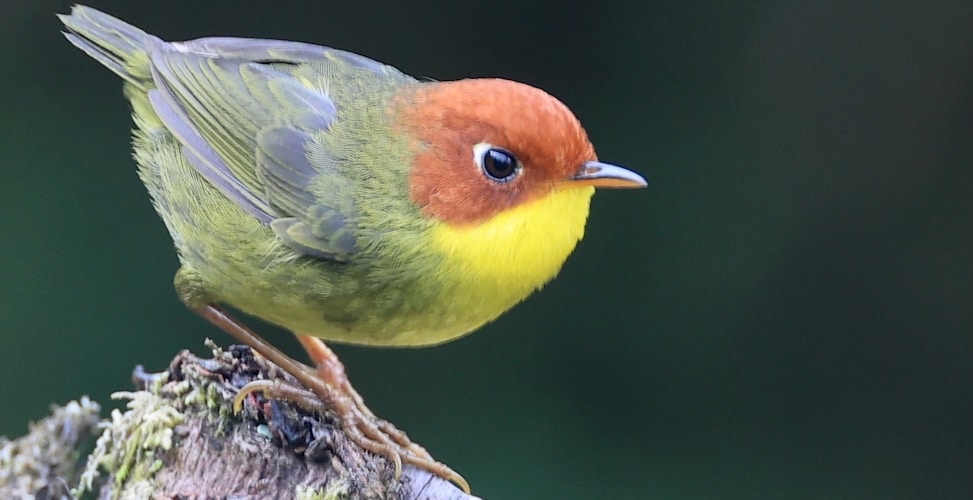
Chestnut-headed Tesia Cettia castaneocoronata – ©Bird-Photo-Tours ASIA
Around 50 species are known to over winter in Bhutan. These include ducks, waders, birds of prey, thrushes, finches & buntings.
14 species recorded in Bhutan have been identified as globally threatened by BirdLife International. These include White-bellied Heron, Pallas’s Fish Eagle, Chestnut-breasted Partridge, Blyth’s Tragopan, Wood Snipe, Dark-rumped Swift, Rufous-necked Hornbill, Grey-crowned Prinia and Beautiful Nuthatch, all of which probably breed in Bhutan. The country is an important wintering ground for another internationally threatened species – the Black-necked Crane. Greater-spotted Eagle is a rare passage migrant, whereas Baer’s Pochard, Imperial Eagle and Hodgson’s Bushchat are regular vagrants.
-
Jigme Tsering
Thimphu, Bhutan | linkedin.com/in/jigme-tshering-8b84772b
https://www.linkedin.com/in/jigme-tshering-8b84772b/
-
Number of bird species: 760
(As at August 2024)National Bird: Common Raven Corvus corax
-
Avibase
PDF ChecklistThis checklist includes all bird species found in Bhutan , based on the best information available at this time. It is based on a wide variety of sources that I collated over many years. I am pleased to offer these checklists as a service to birdwatchers. If you find any error, please do not hesitate to report them. -
Exotic Birding
ChecklistList of all species known to occur in the country. Table indicates whether each species is globally threatened or endangered according to the IUCN and also whether it is migratory, very rare, or accidental in the country. See sidebar for meaning of location codes and symbols associated with common names.* -
Wikipedia
Annotated ListThis is a list of the bird species recorded in Bhutan. The avifauna of Bhutan include a total of 760 species, of which one has been introduced by humans. -
eBird
PDF ChecklistThis checklist is generated with data from eBird (ebird.org), a global database of bird sightings from birders like you. If you enjoy this checklist, please consider contributing your sightings to eBird. It is 100% free to take part, and your observations will help support birders, researchers, and conservationists worldwide.
-
A Naturalist's Guide to the Birds of India
| Bangladesh, Bhutan, Nepal, Pakistan and Sri Lanka | By Bikram Grewal & Garima Bhatia | John Beaufoy Publishing | 2022 | Edition 2 | Paperback | 176 pages, 300+ colour photos, 1 colour map | ISBN: 9781913679347 Buy this book from NHBS.com -
A Photographic Field Guide to the Birds of India, Pakistan, Nepal, Bhutan, Sri Lanka, and Bangladesh
| By Bikram Grewal, Sumit Sen & Sarwandeep Singh | Princeton | 2017 | paperback | 792 pages, 4000+ colour photos, 1300+ colour distribution maps | ISBN: 9780691176499 Buy this book from NHBS.com -
Birds in Bhutan
| Status & Distribution | By Peter Spierenburg | Oriental Bird Club | 2005 | Hardback | 383 pages, b/w illustrations, colour illustrations, colour distribution maps | ISBN: 9780952954514 Buy this book from NHBS.com -
Birds of Bhutan
| By Carol Inskipp, Tim Inskipp & Richard Grimmett | Helm | 2019 | 3rd Edition | Paperback | 192 pages, 70 colour plates, colour photos, maps, b/w line illustrations | ISBN: 9781472941886 Buy this book from NHBS.com -
Birds of the Indian Subcontinent
| By Richard Grimmett, Carol Inskipp & Tim Inskipp | Helm | Paperback | 2012 | Edition: 2 | 528 Pages | 226 Colour Plates | Colour Distribution Maps | Black & White Illustrations ISBN: 9781408127636 Buy this book from NHBS.com
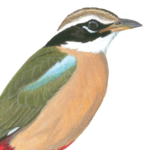
eGuide to Birds of the Indian Subcontinent
Apple iOS | AndroidThe eGuide to Birds of the Indian Subcontinent is an interactive companion to Birds of the Indian Subcontinent – the definitive guide for birdwatchers visiting the region. It covers India, Pakistan, Nepal, Bhutan, Bangladesh, Sri Lanka and the Maldives. This application has specific features that will enhance your birding experience. Please note that an additional download of 84MB is required once this app has been installed. Please ensure you use a WiFi connection to prevent additional data costsOrganisations-
Bhutan Birdlife Society -BBLS
Facebook Page -
Bird Watching Club, MPS
Facebook PageThis page is a learning platform where our children learn about the avians in Tsirang district and c -
Royal Society for the Protection of Nature
WebsiteRoyal Society for Protection of Nature (RSPN) was established in 1987 under the Royal Command of His Majesty The Fourth King of Bhutan as a Citizen-based Non-Governmental Organization (NGO) devoted to the conservation of the Kingdom’s environment. -
Young Bhutanese Birders
WebpageConnecting children to nature and fostering future conservation stewards.
Reserves-
*List of protected areas of Bhutan
InformationSatellite ViewInteractive list of wildlifwe sactuaries, national parks and reserves -
Motithang Takin Preserve
InformationSatellite ViewMotithang Takin Preserve, located in the Motithang district of Thimphu, Bhutan is a wildlife reserve area for takin, the national animal of Bhutan. -
NP Jigme Dorji
InformationSatellite ViewThe Jigme Dorji National Park (JDNP),[1] named after the late Jigme Dorji Wangchuck, is the second-largest National Park of Bhutan. It occupies almost the entire Gasa District, as well as the northern areas of Thimphu District, Paro District, Punakha, and Wangdue Phodrang Districts. It was established in 1974 and stretches over an area of 4316 km², thereby spanning all three climate zones of Bhutan, ranging in elevation from 1400 to over 7000 meters. The park provides sanctuary for 37 known species of mammals including several endangered. -
NP Jigme Singye Wangchuck
InformationSatellite ViewJigme Singye Wangchuck National Park (formerly Black Mountains National Park) covers an area of 1,730 square kilometres (670 sq mi) in central Bhutan. It protects a large area of the Black Mountains, a sub−range of the Himalayan Range System. The park is also vital for various migratory faunal species, particularly migratory birds due to its wide range in altitude and vegetation, and central location in the country. It covers wide range of habitat types from permanent ice atop Durshingla peak (Black Mountain), alpine lakes and pastures, down through conifer and broad-leaved forests to temperate forest and sub-tropical forests. -
NP Phrumsengla
InformationSatellite ViewPhrumsengla National Park [formerly Thrumshingla National Park] in central Bhutan covers just over 905 square kilometres (349 sq mi) across four districts, but primarily in Mongar. It is bisected by the Lateral Road, and contains the Thrumshing La pass. Phrumsengla is home to six species of threatened birds: the rufous-necked hornbill (Aceros nipalensis), rufous-throated wren-babbler (Spelaeornis caudatus), satyr tragopan (Tragopan satyra), beautiful nuthatch (Sitta formosa), Ward's trogon (Harpactes wardi) and Chestnut-breasted partridge (Arborophila mandellii), as well as the near-threatened wedge billed wren babbler (Sphenocichla humei). -
NP Royal Manas
InformationSatellite ViewRoyal Manas National Park is Bhutan's oldest national park, and the Royal government considers it the "conservation showpiece of the Kingdom" and a "genetic depository" for valuable plants. It has an area of 1,057 square kilometres (408 sq mi) and covers eastern Sarpang District, the western half of Zhemgang District, and western Pemagatshel District. Hundreds of species of birds — including four species of hornbills – rufous-necked, wreathed, pied and great Indian — also live in the vast park. -
NP Wangchuck Centennial Park
InformationSatellite ViewWangchuck Centennial Park in northern Bhutan is the kingdom's largest national park, spanning 4,914 square kilometres (1,897 sq mi) over five districts, occupying significant portions of northern Bumthang, Lhuntse, and Wangdue Phodrang Districts. It borders Tibet to the north and is bound by tributaries of the Wong Chhu (Raidāk) basin to the west. Wangchuck Centennial directly abuts Jigme Dorji National Park, Bumdeling Wildlife Sanctuary, and Thrumshingla National Park in northern Bhutan, and is further connected to Jigme Singye Wangchuck National Park in central Bhutan via biological corridors. Thus, most of northern Bhutan is part of these protected areas. The park is home to over 200 species of vascular plants, 23 species of large mammals and over 100 bird species. -
PA Phobjikha Valley
InformationSatellite ViewThe broad valley with its best-known marshland in Bhutan, is popular for its scenic splendour and cultural uniqueness. The valley is rich in faunal biodiversity and has, apart from the globally threatened black-necked cranes Grus nigricollis, 13 other globally threatened species. Within the ambit of the valley, an area of about 163 square kilometres (63 sq mi) has been declared a protected area, which is managed by the Royal Society for the Protection of Nature (RSPN), for the protection of nature, authorized to manage, on lease basis, by the Ministry of Agriculture. -
SNR Jigme Khesar
InformationSatellite ViewThe Jigme Khesar Strict Nature Reserve in Bhutan covers 609.51 square kilometres (235.33 sq mi) in Haa District, occupying most of its area. It borders Sikkim and Tibet to the west and is connected to Jigme Dorji National Park via a "biological corridor." -
WS Bumdeling
InformationSatellite ViewThe Bumdeling Wildlife Sanctuary (also spelled Bumdelling or Bomdeling), which contains the former Kulong Chu Wildlife Sanctuary, covers 1,520.61 square kilometres (587.11 sq mi) in northeastern Bhutan at elevations between 1,500 metres (4,900 ft) and 6,000 metres (20,000 ft). The sanctuary has been identified as an Important Bird Area by BirdLife International because it supports black-necked cranes (it is one of the country’s two wintering sites), wood snipes and grey-crowned prinias. -
WS Jomotsangkha (Khaling)
InformationSatellite ViewKhaling Wildlife Sanctuary is the smallest protected area of Bhutan covering 334.73 square kilometres (129.24 sq mi) in Samdrup Jongkhar District along the southern border with Assam. Its elevations range between 400 metres (1,300 ft) and 2,200 metres (7,200 ft). Khaling Wildlife Sanctuary is, despite its small acreage, an important habitat for elephants, gaur (Bos gaurus), and other tropical wildlife. It may also contain the rare pygmy hog (Porcula salvania) and hispid hare (Caprolagus hispidus) known to inhabit the adjacent Khaling Reserve in Assam, with which Khaling Wildlife Sanctuary forms a trans-border reserve -
WS Phibsoo
InformationSatellite ViewThe Phibsoo Wildlife Sanctuary is the second-smallest national park in Bhutan, covering 268.93 square kilometres (103.83 sq mi) in western Sarpang District and southeastern Dagana District along the border with West Bengal. It is connected to Jigme Singye Wangchuck National Park and Royal Manas National Park via a "biological corridor" that crosses a national highway. Its elevations range from 200 metres (660 ft) to 1,600 metres (5,200 ft). Phibsoo is unique in Bhutan for its chital (Axis axis, "spotted deer") and natural sal (Shorea robusta) forests. Like Royal Manas National Park, Phibsoo is inhabited by elephants, bengal tigers, gaur, three species of mahseer, and possibly the rare Ganges River dolphin. -
WS Sakteng
InformationSatellite ViewSakteng Wildlife Sanctuary is a wildlife sanctuary located mostly in Trashigang District and just crossing the border into Samdrup Jongkhar District, Bhutan.[2] It is one of the country's protected areas. It is listed as a tentative site in Bhutan's Tentative List for UNESCO inclusion. It protects several endemic species including the eastern blue pine and the black-rumped magpie.
Guides & Tour Operators-
Bhutan Birding
Local Tour OperatorQuality Birding in the Himalayas - Organizing birds watching and wildlife photography tours. Despite the Bhutanese people abiding love of nature, bird watching as an organized pursuit is a new concept in Bhutan, and most of the birding tours are lead by foreign tour guides. While generally knowledgeable, these guides typically lack the in-country experience necessary to maximize the chances for successful sightings. In contrast, at Bhutan Birding we take pride in having a team of experienced and professional Bhutanese bird watching guides -
Bhutan Majestic Travel
Local Tour OperatorThe diversity of Bhutan’s avifauna is extraordinary. The wide range of altitudes make climactic conditions suitable to help support many species and biodiversity. -
Bird Photo Tours ASIA
Tour OperatorBird-Photo-Tours Asia' Bhutan expedition offers some of the finest bird photography opportunities in the entire Himalayas with spectacular scenery alongside the sheer pleasure of traveling through Bhutan, one of the friendliest and least disturbed countries in the world. -
Bird Photo Tours ASIA
Tour OperatorBird-Photo-Tours Asia' Bhutan expedition offers some of the finest bird photography opportunities in the entire Himalayas with spectacular scenery alongside the sheer pleasure of traveling through Bhutan, one of the friendliest and least disturbed countries in the world. -
BirdQuest
Tour OperatorBirding Druk Yul: the extraordinary ‘Land of the Thunder Dragon -
Birding Ecotours
Tour OperatorOur Bhutan birding tours visit all of this fascinating and picturesque Himalayan country’s prime birding sites and target a range of Himalayan bird specials. -
Birds Wildlife & Nature
Tour OperatorThe Buddhist Kingdom of Bhutan lies on the eastern edge of the Himalayas and is known for its unique culture and dramatic landscapes. -
Bluetail Birding
Local Tour OperatorBluetail Birding is a dedicated bird tour operator offering both scheduled departure (small group) and custom travel worldwide. We specialise in bird tours across South Asia, to destinations throughout India, Bhutan, Nepal and Sri Lanka where we have been operating since 2009 as India Nature Tourism, which now acts as our ground agent in this region. -
Eagle-Eye Tours
Tour OperatorSuperb birding! Over 250 species including birds extremely rare elsewhere - monals, tragopans, trogons, Ibisbill and more -
HeatherLea
Tour OperatorBhutan is one of the last pristine pockets of the entire Himalaya. Largely untouched by the modern world, Bhutan is an enigmatic mountain kingdom of beautiful scenery, high, snow-capped mountains, vast, primeval, lush green forests, picturesque, traditional villages, mighty dzongs (a distinctive type of fortress architecture), monasteries overlooking crystal clear rivers, and an abundance of wildlife. -
Incredible Birding
Tour OperatorBhutan Birding Expedition -
Langur Eco Travels
Local Tour OperatorSet between the Plains of India and the High Himalayas, Bhutan is the perfect escape from daily routine where, Snow-capped mountains, verdant valleys, dense jungles and crystal-clear rivers combine with a calming ancient Buddhist culture where no harm is permitted to any sentient being, results in Bhutan being one of the top bio-diversity countries in the world. -
Red Hill Birding
Local Tour Operator...This tour is scheduled for what could be called the “alternate” birding season. While many Bhutan tours go in spring, we’ve decided to run an autumn trip. The birding is still excellent, the air is at its clearest, and we stand a great chance to find a few birds that are very difficult on spring trips, like White-bellied Heron, Black-necked Crane, and Wallcreeper... -
Rockjumper Birding Tours
Tour OperatorWith seemingly endless forests and arguably the most magnificent mountain scenery in the world, Bhutan is a thoroughly recommended and highly enjoyable destination. Our tour targets include Satyr Tragopan, Himalayan Monal, Blood Pheasant, Ibisbill, Rufous-necked Hornbill, Ward’s Trogon, Fire-tailed Myzornis, Beautiful Nuthatch and an astounding selection of wren-babblers and parrotbills. -
Tropical Birding Tours
Tour OperatorBhutan: Land of the Thunder Dragon - Birding Tour
Trip Reports-
2004 [06 June] - John McAllister
PDF ReportThis report is from (the late) John McAllister and is about a trip mostly organised through Fatbirder’s Anytime Tours. It took place between 15th may to 6th June 2004 and combined birding with culture. -
2015 [04 April] - Richard Webster
ReportBhutan is a cold, rainy place. Or, it can be, and it was, and, as chance had it, it was a cold, rainy place when we went camping! Bhutan is a glorious place, even when it is cold and rainy, and more so when it isn't, which was most of the time. Actually, the weather was probably average, a real mix, with a few really clear days, a couple of rainy periods, and many more days that were cloudy but pleasant. -
2015 [05 May] - Rockjumper
ReportOur Bhutan tour kicked off at 350m above sea level in Samdrup Jongkhar, the border town close to Assam. The town's quiet gentility was quite a contrast to the hubbub of the Indian province in which we had just spent the last five days. Our arrival was in the late afternoon, so after settling into our hotel and meeting for dinner there wasn't much scope for birding. After supper, attempts to draw in a calling Collared Scops Owl were not entertained by the bird in question and a thunderstorm gently encouraged us to head to our rooms. This was to be the first of many encounters with rain in hutan! -
2015 [06 June] - Peter Ericsson
ReportFor years I had wanted to visit Bhutan having heard glorious stories of snow covered mountain peaks and mountains laden with green prime forests in a country filled with birds. -
2016 [04 April] - Aseem Kothiala
Report...Our afternoon and the next day session's were drive on the 34 Kms stretch for birding upto Chele La (3700m) the highest pass in Bhutan accessible by road. The climate changed drastically as we kept stopping and moving towards the pass. Sighted the Grey-backed Shrike, Spotted Nutcracker, Darjeeling Woodpecker, Tits, Northern Goshawk, Red-billed Chough, Rufous-backed Accentor and Plain mountain Finch in very large numbers and flocks... -
2016 [04 April] - Aseem Kothiala
Report...Our afternoon and the next day session's were drive on the 34 Kms stretch for birding upto Chele La (3700m) the highest pass in Bhutan accessible by road. The climate changed drastically as we kept stopping and moving towards the pass. Sighted the Grey-backed Shrike, Spotted Nutcracker, Darjeeling Woodpecker, Tits, Northern Goshawk, Red-billed Chough, Rufous-backed Accentor and Plain mountain Finch in very large numbers... -
2016 [04 April] - Richard Webster & Thinley Gyeltshen
Report...Rufous-winged Fulvetta is one of many babblers that are not front-cover material for the field guide, but are birds at which one keeps looking and looking because of the complicated, beautiful plumage... -
2016 [04 April] - Wayne Jones - Bhutan
PDF Report...villages dotted with occasional Asian Openbills and Lesser Adjutants. A midway stop, at a roadside wetland, yielded: acouple hundred Lesser Whistling Ducks; Oriental Darter; Little Cormorant, and Bronze-winged Jacana... -
2017 [03 March] - Andre Bernon
PDF ReportOur 12-day tour of this mountain Kingdom was highly successful in all other aspects of birding,as well as some great cultural experiences too. We had some great Bhutanese specials,such as Rufous-necked Hornbill, Beautiful Nuthatch, Satyr Tragopan, Himalayan Monal, Blood Pheasant and 4 species of Parrotbill! -
2017 [04 April] - Rich Lindie
PDF ReportOur birding adventureinAssam began, as most do, at the local dump. Needless to say, the general ambience to be had there was much like that found at just about any dump on the planet, though the presence of such large numbers of adjutants, including several of the greater persuasion, meant we could have only been in Guwahati. Indeed, the city's official tipis undoubtedly the most accessible site for getting up close and personal with this very endangered bird. -
2017 [04 April] - Richard Webster
Report...Among the marquee birds, we did well, seeing such stars as Ibisbill, Satyr Tragopan, Himalayan Monal, Blood Pheasant, Rufous-necked Hornbill, Yellow-rumped Honeyguide, and Ward’s Trogon. We did even better with the host of birds that don’t get top billing, but elicited just many raves as some of the stars. In particular, we savored our views of Golden-breasted Fulvetta, Rufous-throated Wren-Babbler, Hoary-throated Barwing, Scaly-breasted Cupwing, Spotted Elachura, Great and Fulvous Parrotbills, Broad-billed Warbler, and Black-headed Shrike-Babbler. As always, we did miss some special birds, including the typically tough White-bellied Heron and Beautiful Nuthatch, and we would have been very pleased if Fire-tailed Myzornis and Fire-tailed Sunbird had stayed around longer.... -
2017 [06 June] - Tom Tarrant - Bhutan & Thailand
ReportOver the years I have frequently dreamt of visiting the Kingdom of Bhutan and checking out it’s pristine forests and exquisite wildlife but felt that the cost was ‘prohibitive’, as there is a standard-fee of US$250/pp/day set by the government. Recently whilst scanning Facebook I saw a 14-day budget-birding trip offered for under $3,000 and decided to investigate-further. I contacted the company’s chief birder Norbu and it appears that June is an ‘Off-Peak’ period and the fee is reduced to US$200/pp/day, if 3 or more birders can be found for the tour……after a few emails I ‘signed-up’ and received a very exciting itinerary and started dreaming of Beautiful Nuthatches and Ward’s Trogons... -
2017 [11 November] - Julien Bell
ReportThis trip report covers the best part of a week spent in Bhutan with Nature Tourism Bhutan. As usual for my holidays this was not strictly speaking a full-on birding trip (we would have visited other areas of Bhutan for that and probably spent longer there too). However, there was a higher focus on birds than usual with certain species prioritised in between various cultural experiences and hiking in the spectacular mountains. The birding priority for me was Ibisbill - a species I have dreamed of seeing since I was a teenager... -
2019 [04 April] - India Nature
PDF Reporthe Kingdom of Bhutan is a rampart of spectacular Himalayan terrain boasting glorious mountain scenery and some of the most extensive tracts of broad-leaved and subtropical forest that remain in the bird-rich Eastern Himalaya. -
2023 [04 April] - Dylan Vasapolli
PDF ReportBirding was excellent, and we netted virtually all of Bhutan’s major birding targets – from the mega Satyr Tragopan and beautiful Himalayan Monal, to denizens like Ibisbill, Fire-tailed Myzornis, Beautiful Nuthatch, Ward’s Trogon and the very rare White-bellied Heron. All in all, over 300 species of birds were seen on this tour. Mammals are decidedly less numerous in Bhutan, and we did well to find a Yellow-throated Marten, along with the stunning Gee’s Golden Langur and enormous Black Giant Squirrel. -
2023 [04 April] - Peg Abbott
ReportAn exceptional journey, though this year was made more complex due to border closings in the east, we flew in and out of Paro but still covered a lot of terrain. Guides Norbu Bumthap, Pema Dawa and Avijit Sarkhel tirelessly shared their expertise in varied habitats of this spectacular terrain. Beautiful vistas and blooming rhododendrons colored our days; on Chele La we had snow! -
2023 [05 May] - Craig Robson
PDF ReportWith over 400 species of birds recorded by us during this wonderful journey, there were some superb highlights: Blood Pheasant, Satyr Tragopan, Himalayan Monal, Kalij Pheasant, Black-tailed Crake, Ibisbills with young, Tibetan Sand Plover, Solitary Snipe, five sightings of the magnificent White-bellied Heron, Pallas’s Fish Eagle, Himalayan Owl, the lovely Ward’s Trogon... -
2024 [03 March] - Glen Valentine & Keith Valentine
PDF ReportAs usual, the list of amazing birds encountered during our early spring tour is enviable with a long selection of spectacular Himalayan avian specialties that is rivalled by few other destinations. Some of the many highlights included all 4 key pheasants (Satyr Tragopan, Himalayan Monal and Blood and Kalij Pheasants), Ibisbill, Wallcreeper... -
2024 [04 April] - Glen Valentine
PDF ReportAs usual, the list of amazing birds encountered during our late-spring tour of 2024 is enviable with a long selection of spectacular Himalayan avian specialties that is rivalled by few other destinations. Some of the many highlights included all 4 key pheasants (Satyr Tragopan, Himalayan Monal and Blood and Kalij Pheasants), Ibisbill (several encounters including a pair with chicks!), Black-tailed Crake, Ward’s Trogon (on two occasions!), Rufous-necked Hornbill, Yellow-rumped Honeyguide...
Other Links-
Bhutan - The Last Shangri-La
WebsiteThe Himalayas in general are an ornithological paradise: Nepal has more than 800 species, Sikkim and Bhutan more. Depending upon whose tally one adheres to, this compares favorably with the 1,200 to 1,800 species found in the entire Indian subcontinent. The abundance of birdlife reflects the extent of the diversity of life zones and habitats, as well as the central position of the Himalaya between two major biogeographical zones -
Bhutan Environmental Conservation
WebsiteIn 1988 Bhutan was identified by Norman Myers as one of the ten biodiversity hot spots in the world. It has also been identified as the centre of 221 global endemic bird areas. Bhutan`s ecosystem harbours some of the most exotic, endemic species of the eastern Himalayas. It has an estimated 770 species of birds, and over 50 species of rhododendron. The mountains brim with other exotic species like the blue poppy and different medicinal herbs. Animals like takins, snow leopards, golden langurs, tigers and elephants roam its forests. -
The Road Between Ura and Limithang in Eastern Bhutan
WebsiteBhutan has recently cracked its door ajar, permitting birders to sample some of its truly sumptuous avian delights…
-
Fatbirder - linking birders worldwide...
Skip to content


